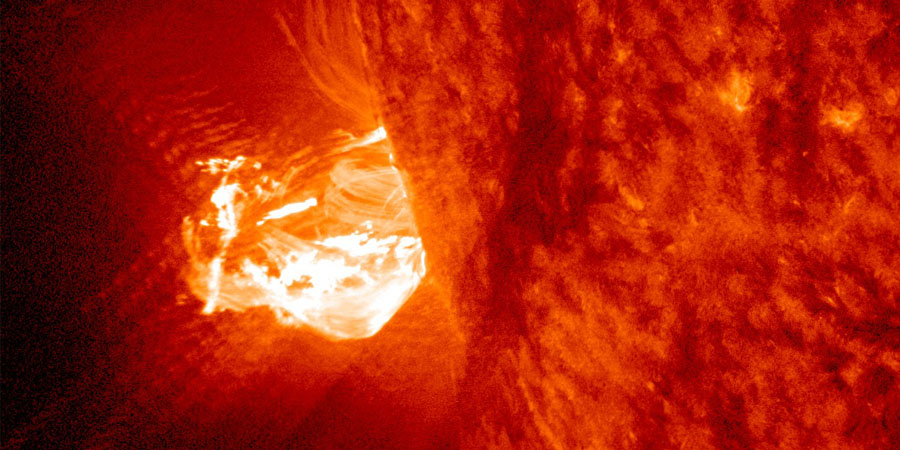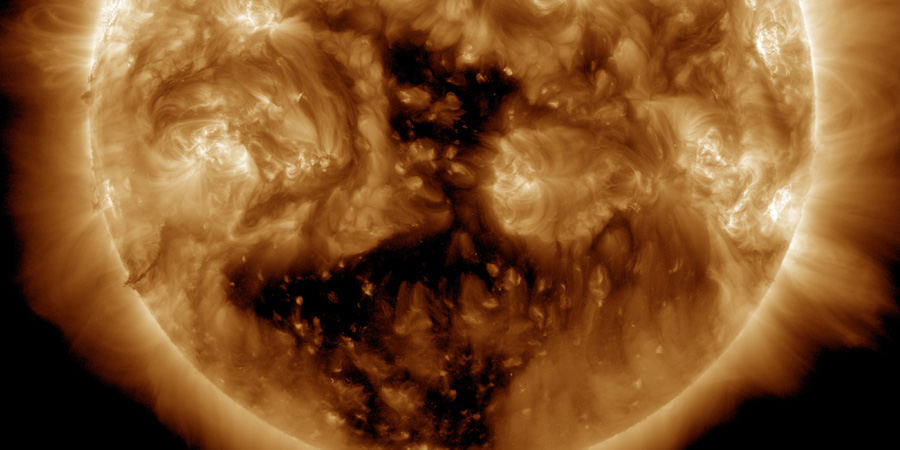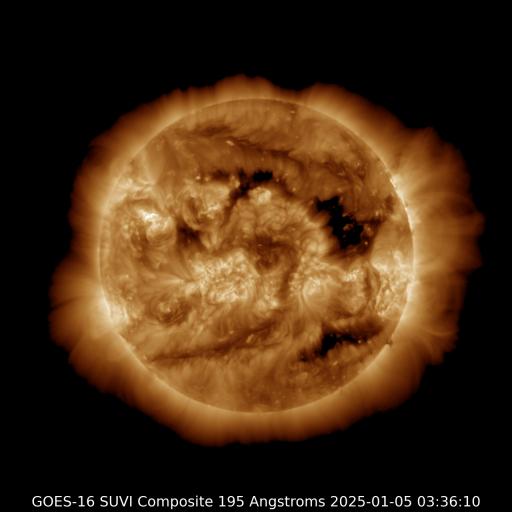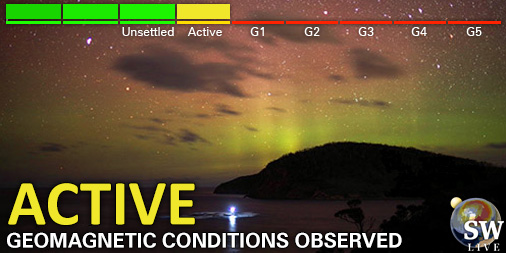X2.9 solar flare, Welcome back 3664?
Monday, 27 May 2024 17:22 UTC

A major X2.9 solar flare (R3-strong) took place today peaking at 07:08 UTC. The flare came from a sunspot region just behind the south-east limb. This is likely the anticipated return of old sunspot region 3664 which was the source of many major X-class solar flares during its previous visit of the earth-facing solar disk and an extreme G5 geomagnetic storm which was the first of its kind in 21 years.
The solar flare was highly eruptive but the resulting coronal mass ejection is not aimed towards our planet. What a return! We should be able to see in about 24 to 48 hours from now what is left of this sunspot region. It will take an additional 5 days or so for the region to be at the center of the earth-facing solar disk. Who is excited and hopeful that the region still packs a punch as it rotates into an earth-facing position?
Today's X2.9 solar flare likely came from old sunspot region 3664 which was the source of many major X-class solar flares during its previous visit of the earth-facing solar disk and an extreme G5 geomagnetic storm which was the first of its kind in 21 years. The solar flare was… pic.twitter.com/VTf3ri6XP4
— SpaceWeatherLive (@_SpaceWeather_) May 27, 2024
Another look at the impressive X2.9 solar flare that peaked today at 07:08 UTC. This animation shows how an impressive amount of solar plasma is flung into space. Big thanks to forum user Juress for creating this animation.
— SpaceWeatherLive (@_SpaceWeather_) May 27, 2024
Do you also want to join the discussion on our… pic.twitter.com/1re9rBtIMJ
Thank you for reading this article! Did you have any trouble with the technical terms used in this article? Our help section is the place to be where you can find in-depth articles, a FAQ and a list with common abbreviations. Still puzzled? Just post on our forum where we will help you the best we can!
Current data suggests there is a slight possibility for aurora to appear at the following high latitude regions in the near future
Whitehorse, YTAnchorage, AK, Fairbanks, AK, Utqiagvik, AK
Latest news
Latest forum messages
Support SpaceWeatherLive.com!
A lot of people come to SpaceWeatherLive to follow the Sun's activity or if there is aurora to be seen, but with more traffic comes higher server costs. Consider a donation if you enjoy SpaceWeatherLive so we can keep the website online!

Latest alerts
Monday, 24 March 2025
Coronal hole faces Earth
The anticipated strong G3 geomagnetic storm watch never materialized as the coronal mass ejection that was supposed to arrive early yesterday didn't arrive until today just past midnight UTC. The impact was very lackluster with the Bt (total strength of the IMF) increasing to a moderate 15nT at best and the solar wind speed reaching just 420km/s. A far cry from the anticipated 700 to 800km/s. That once again goes to show how hard it is to forecast space weather events and any resulting geomagnetic conditions. We remain under the influence of the CME and high latitude sky watchers should remain alert for some nice aurora displays but middle latitude sky watchers will probably have to wait for the next opportunity.
Read more13:55 UTC - Coronal hole
A transequatorial coronal hole is facing Earth. Enhanced solar wind could arrive in ~3 days
02:45 UTC - Geomagnetic activity
Active geomagnetic conditions (Kp4) Threshold Reached: 02:33 UTC
Space weather facts
| Last X-flare | 2025/02/23 | X2.0 |
| Last M-flare | 2025/03/21 | M1.2 |
| Last geomagnetic storm | 2025/03/22 | Kp6- (G2) |
| Spotless days | |
|---|---|
| Last spotless day | 2022/06/08 |
| Monthly mean Sunspot Number | |
|---|---|
| February 2025 | 154.6 +17.6 |
| March 2025 | 138.3 -16.4 |
| Last 30 days | 136.1 -18.1 |





